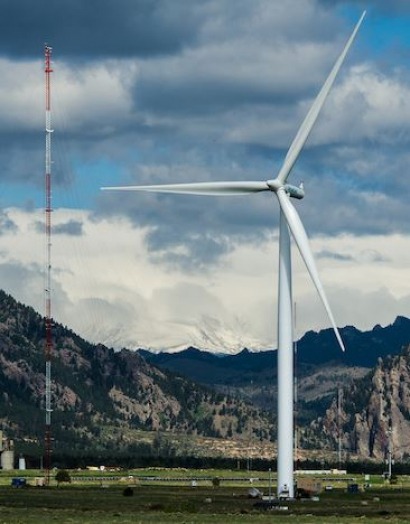
The report, "Beyond Renewable Portfolio Standards: An Assessment of Regional Supply and Demand Conditions Affecting the Future of Renewable Energy in the West," compares the cost of renewable electricity generation (without federal subsidy) from the West’s most productive renewable energy resource areas — including any needed transmission and integration costs — with the cost of energy from a new natural gas-fired generator built near the customers it serves.
“The electric generation portfolio of the future could be both cost effective and diverse,” said NREL Senior Analyst David Hurlbut, the report’s lead author. “If renewables and natural gas cost about the same per kilowatt-hour delivered, then value to customers becomes a matter of finding the right mix.
“Renewable energy development, to date, has mostly been in response to state mandates,” Hurlbut continued. “What this study does is look at where the most cost-effective yet untapped resources are likely to be when the last of these mandates culminates in 2025, and what it might cost to connect them to the best-matched population centers.”
The study draws on an earlier analysis the lab conducted for the Western Governors’ Association to identify areas where renewable resources are the strongest, most consistent, and most concentrated, and where development would avoid protected areas and minimize the overall impact on wildlife habitat.
Among the study’s findings:
Wyoming and New Mexico could be areas of robust competition among wind projects aiming to serve California and the Southwest. Both states are likely to have large amounts of untapped, developable, prime-quality wind potential after 2025.
Wyoming’s surplus will probably have the advantage of somewhat higher productivity per dollar of capital invested in generation capacity; New Mexico’s will have the advantage of being somewhat closer to the California and Arizona markets.
Montana and Wyoming could emerge as attractive areas for wind developers competing to meet demand in the Pacific Northwest. The challenge for Montana wind power appears to be the cost of transmission through the rugged forests that dominate the western part of the state.
Wyoming wind power could also be a low-cost option for customers in Utah, which also has its own diverse portfolio of in-state resources.
Colorado is a major demand center in the Rockies and will likely have a surplus of prime-quality wind potential in 2025. However, the study suggests that Colorado is likely to be isolated from future renewable energy trading in the West due to transmission costs between the state and its Rocky Mountain neighbors.
California, Arizona, and Nevada are likely to have surpluses of prime-quality solar resources. None is likely to have a strong comparative advantage over the others within the three-state market, unless environmental or other siting challenges limit in-state development. Consequently, development of utility-scale solar will probably continue to meet local needs rather than expand exports.
New geothermal development could trend toward Idaho by 2025 since much of Nevada’s resources have already been developed. Geothermal power from Idaho could be competitive in California as well as in the Pacific Northwest, but the quantity is relatively small. Reaching California, Oregon, and Washington may depend on access to unused capacity on existing transmission lines, or on being part of a multi-resource portfolio carried across new lines.
The study notes future electricity demand will be affected by several factors including: trends in the supply and price of natural gas; consumer preferences; technological breakthroughs; further improvements in energy efficiency; and future public policies and regulations. While most of these demand factors are difficult to predict, the study’s supply forecasts rely on empirical trends and the most recent assessments of resource quality.
For additional information:

